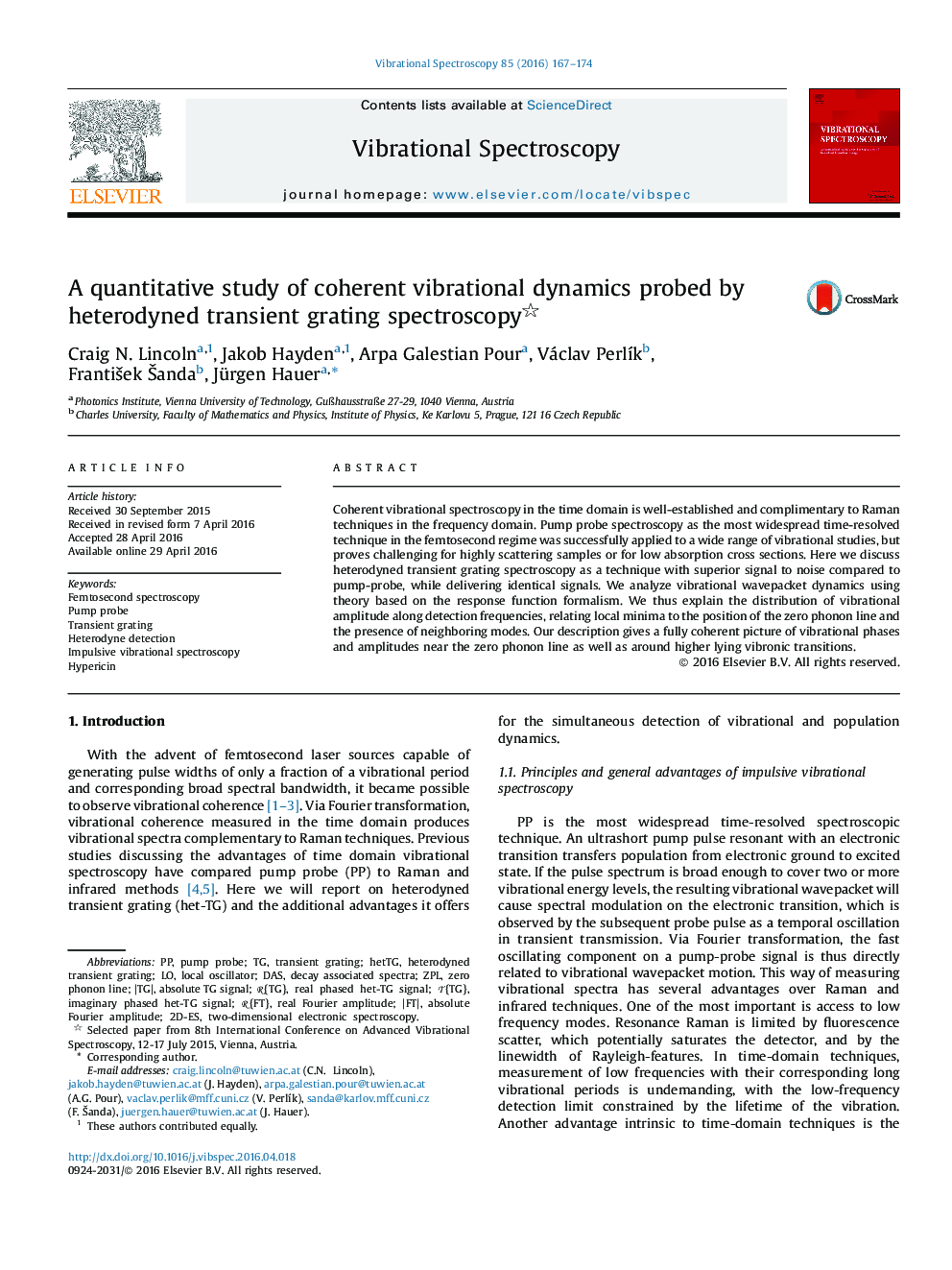| Article ID | Journal | Published Year | Pages | File Type |
|---|---|---|---|---|
| 1249567 | Vibrational Spectroscopy | 2016 | 8 Pages |
•Heterodyned transient grating spectroscopy (het TG) is shown to be a highly insightful method for analyzing vibrational wavepacket motion in a complex organic molecule.•All findings are explained and modelled in a response function formalism.•The differences to and advantages of het TG over pump-probe spectroscopy and absolute TG are discussed.
Coherent vibrational spectroscopy in the time domain is well-established and complimentary to Raman techniques in the frequency domain. Pump probe spectroscopy as the most widespread time-resolved technique in the femtosecond regime was successfully applied to a wide range of vibrational studies, but proves challenging for highly scattering samples or for low absorption cross sections. Here we discuss heterodyned transient grating spectroscopy as a technique with superior signal to noise compared to pump-probe, while delivering identical signals. We analyze vibrational wavepacket dynamics using theory based on the response function formalism. We thus explain the distribution of vibrational amplitude along detection frequencies, relating local minima to the position of the zero phonon line and the presence of neighboring modes. Our description gives a fully coherent picture of vibrational phases and amplitudes near the zero phonon line as well as around higher lying vibronic transitions.
